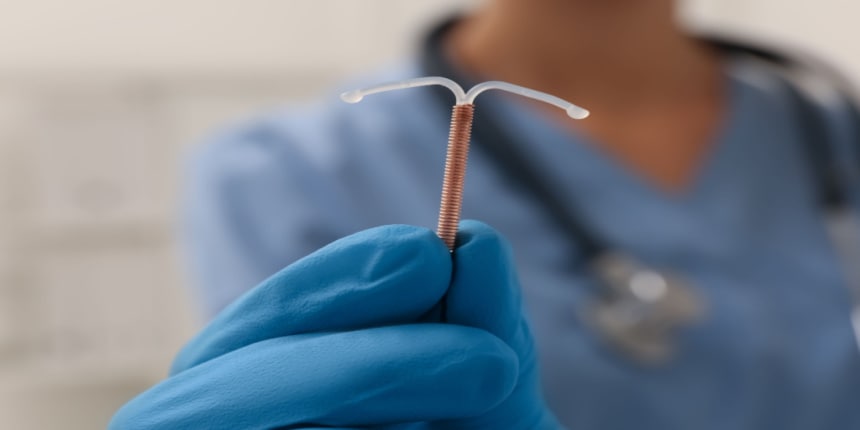IUD Full Form
What is the full form of IUD?
A small, frequently T-shaped birth control device called an intrauterine device (IUD), also known as an intrauterine contraceptive device (IUCD or ICD), or coil, is put into the uterus to prevent pregnancy. One of the most effective methods of contraception now available, intrauterine devices (IUDs) has failure rates that are comparable to those of different types of sterilization. IUDs have a number of advantages, including effectiveness, simplicity, reversibility, and patient satisfaction, especially when considering the time commitment required for long-term use and cost. The benefits, hazards, and indications for inserting and removing intrauterine devices are covered in this article. The interprofessional team's involvement in delivering the best care to patients undergoing intrauterine device implantation and removal will also be covered in detail in this activity. There are two types of IUDs: Hormonal IUDs and Copper IUDs
- What is the full form of IUD?
- Working of IUDs
- Advantages of IUDs
- Disadvantages of IUDs


Working of IUDs
IUDs mainly function by avoiding fertilization. In order to keep sperm from reaching the fallopian tubes, the progestogen delivered by hormonal IUDs primarily thickens the cervical mucus. IUDs may also prevent ovulation from happening, albeit this only happens partially. IUDs made of copper do not contain any hormones but instead emit copper ions that are harmful to sperm. Additionally, they lead to the production of fluid that is poisonous to sperm and contains white blood cells, copper ions, enzymes, and prostaglandins in the uterus and fallopian tubes. The extremely high efficacy of copper-containing IUDs as emergency contraception suggests that they may also function by inhibiting blastocyst implantation.
Advantages of IUDs
Effectiveness: These birth control options are among the best on the market.
Longevity: They can endure anywhere between three and twelve years, depending on the type.
Convenience: No need for pre-sex preparation or reminders.
Cost Effective: IUDs can be quite expensive up front, but there are no additional fees for several years after that.
Reversible: You can have it removed if you wish to start attempting to conceive straight away.
Easier periods: Periods are often lighter and cramps are less severe for many people.
Disadvantages of IUDs
Sexually transmitted infections (STIs) are not prevented by them.
It may hurt to insert.
If you don't have insurance, the up-front expense may be high. (To learn more about your options, view our guide to free and inexpensive birth control.)
There are hazards, albeit they are uncommon.
Frequently Asked Questions (FAQs)
When an IUD is implanted, most people experience some cramping or pain. Some people may have more severe discomfort, but fortunately, it only lasts for a minute or two.
Any time throughout your menstrual cycle is suitable for removing an IUD.
Hormonal IUDs like Mirena, Skyla, Liletta, and Kyleena might reduce or even eliminate your menstrual periods.
IUDs and the pill work incredibly well to stop pregnancies. The pill is 91% effective, compared to 99% for the IUD.